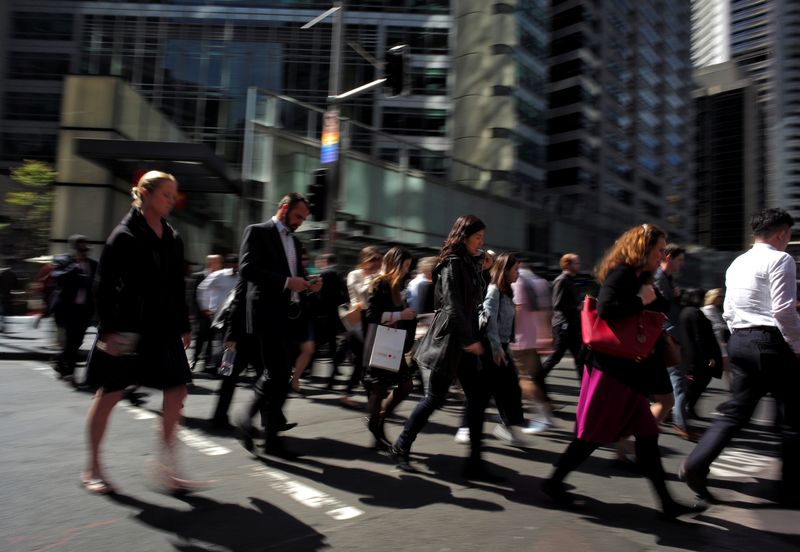By Wayne Cole
SYDNEY (Reuters) - Australia's economy slowed to a crawl in the March quarter as high borrowing costs and still-elevated inflation put the brakes on consumer spending, even as the prospect of relief on interest rates remains a distant one.
Data from the Australian Bureau of Statistics on Wednesday showed real gross domestic product (GDP) rose 0.1% in the first quarter, just under market forecasts of 0.2%.
Annual growth dropped to 1.1%, from 1.5% the previous quarter and the slowest pace in three decades outside of the pandemic.
Growth in household spending, which accounts for half of GDP, was only a fraction firmer at 1.3%. Most of that was on essential items such as electricity and healthcare, with discretionary spending almost flat for the year.
There was also grim news for future spending power with the savings rate sinking to a historically low 0.9%, after large downward revisions to past numbers.
"Given that the savings rate was around 5% before the pandemic, that underlines the severe pressure households have been facing due soaring living costs, interest payments and taxes," said Marcel Thieliant, head of Asia-Pacific economics at Capital Economics.
"And with real incomes stagnating last quarter, that pressure hasn't fully faded yet."
Financial markets have already priced out any risk of a further hike in the Reserve Bank of Australia's (RBA) 4.35% cash rate, but neither do they see much chance of a cut anytime soon.
Futures imply around a 50-50 probability of a move in December and are not fully priced for a cut to 4.10% until May next year.
Speaking to lawmakers before the data, RBA Governor Michele Bullock acknowledged the economy was "very, very weak", but insisted policy needed to be restrictive to bring demand back into line with supply and curb inflation.
The last monthly report for consumer price inflation showed a surprise pick up to 3.6% in April, driven by a broad increase in costs from food to health, clothing and travel.
Measures of prices in the GDP report were also on the high side, with inflation in domestic demand running at 4.6% for the year.
All this inflation has been a boon for nominal GDP, which expanded 3.5% in the year to March. In current dollars, GDP amounted to A$2.6 trillion ($1.73 trillion) in the year or A$98,224 for every one of Australia's 26.8 million people.
Once inflation was stripped out, however, per capita GDP actually fell 0.4% in the quarter and was down a steep 1.3% on the year.
This per capita "recession" reflects booming migration, which had boosted annual population growth to a heady 2.5%, double the average of the last three decades.

The influx of overseas workers and students has strained the housing market and pushed rents to record highs, leading the Labor government to promise caps on future immigration.
($1 = 1.5015 Australian dollars)